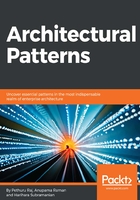
The remote presentation client-server pattern
In the remote presentation client-server pattern, the graphical user interface (GUI) frontend is mapped to an existing application's text-based screen. This process is called Remote mapping or Front ending. The typical mode of operation of this pattern involves the use of intelligent workstations, which are equipped with the capability to intercept the text screen streams of data that are sent from a server system, and display them in a windowed system using a GUI. However, in these systems, most of the processing and computation happens on the server end only. One ideal example of this implementation is IBM's 3270 (mainframe) application. In this application, data from the application is sent to 3270's screen program on the mainframe to be displayed. The data is then sent to the client workstation in the form of a 3270-data stream. The client workstation receives the data, interprets it, and converts it to a graphical form to be displayed in a window. If the user enters any data through the client workstation in the GUI window, the front ware application that runs in the client workstation converts the data into a 3270-compatible format and sends it back to the server for the next course of action. The split of functions in a remote presentation client-server pattern is depicted in the following diagram:
